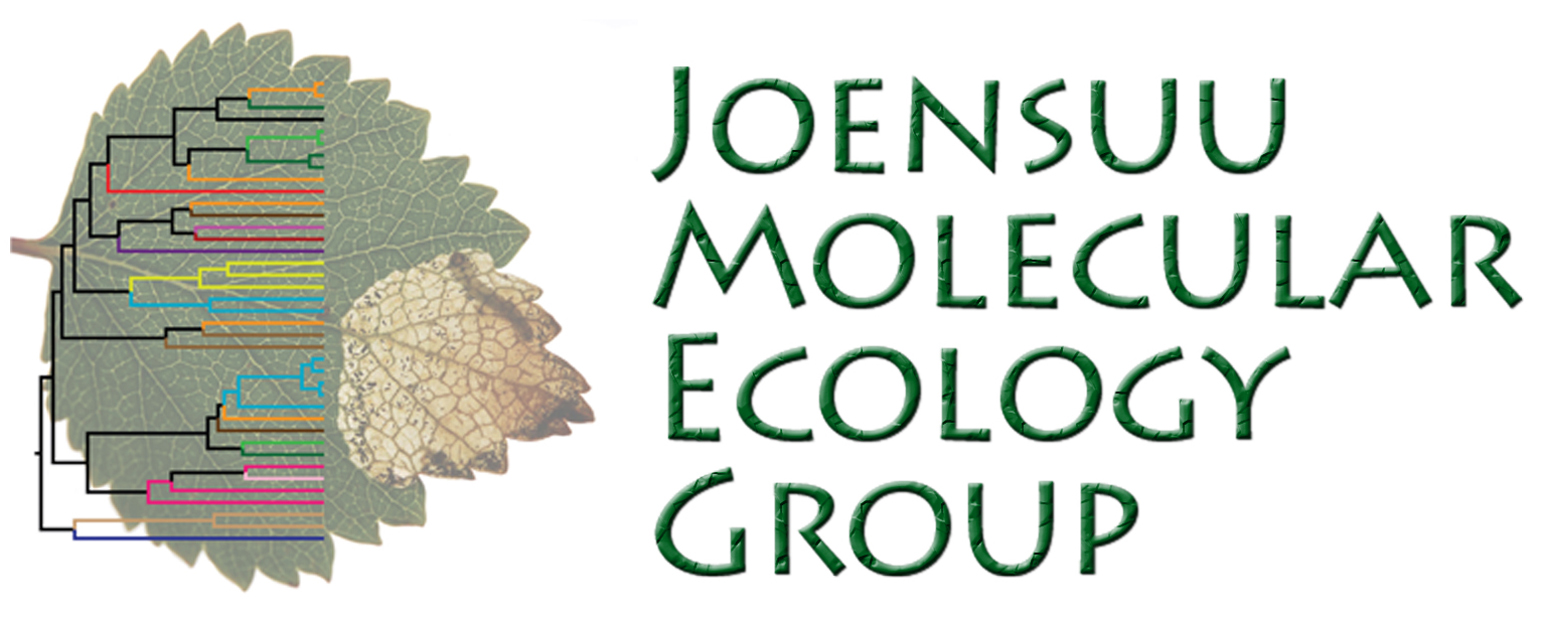 |
||||||||||
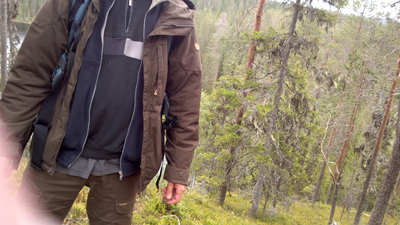 |
Tommi Nyman Principal instigator at the JMEG. Works as an Associate professor in Evolutionary ecology at the Department of Environmental and Biological Sciences at the UEF's Joensuu campus. Despite having an inordinate fondness for sawflies is interested in all, or at least many, aspects of coevolutionary interactions, factors affecting community structure and assembly, genetic diversity, and speciation. |
|||||||||
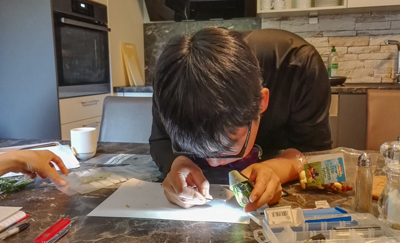 |
Ryosuke Nakadai Visiting postdoctoral researcher from the University of the Ryukyus, Japan. In his project Biodiversity hierarchy of food webs centered around willows, Ryosuke will investigate how plant community richness and species-level genetic diversity influence the structure of complex plant–herbivore–parasitoid networks under a variety of environmental conditions, and how network similarity depends on genetic vs. geographic and environmental distance. The main analyses will involve ddRADseq-based estimation of large-scale spatial variation in local genetic diversity of northern Salix species, and metabarcoding-based inferences of community structures of willow-associated herbivores and their natural enemies. Ryosuke's one-year project, which started in May 2018, is funded by the Japan Society for the Promotion of Science. The project is supervised by T. Nyman and Researcher Anu Valtonen (UEF). |
|||||||||
 |
Saskia Wutke Postdoctoral researcher in the Deep divergences line of the project Resolving deep divergences and rapid radiations in the order Hymenoptera. Saskia uses targeted capture and high-throughput sequencing of ultraconserved elements (UCEs) to infer macroevolutionary patterns in niche use and speciation–extinction dynamics in the hyperdiverse insect order Hymenoptera, which originated over 300 million years ago. The statistical analyses will be based on phylogenomic trees constructed on the basis of UCE data from hundreds of hymenopteran species. This level of sampling requires extensive use of specimens stored in museums around the world, so the project will benefit from Saskia's experience in ancient DNA techniques gained during her PhD thesis project on the genetics of horse domestication. The three-year postdoc project, which is funded by the Academy of Finland, involves extensive collaboration with an international research team consisting of specialists in hymenopteran ecology and taxonomy as well as experts in phylogenomics, including Brant Faircloth (Louisiana State University) and Niklas Wahlberg (Lund University). |
|||||||||
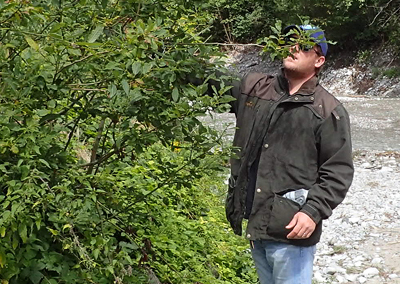 |
Craig Michell PhD student 2017– in the Rapid radiations line of the project Resolving deep divergences and rapid radiations in the order Hymenoptera. Craig's aims are to elucidate species limits and phylogenetic relationships within several young but highly diverse sawfly genera and subfamilies. When combined with background data on species-level niche use and geographic ranges, these analyses will shed light on factors that drive speciation in plant-feeding insects. The work straddles the border between population genomics and phylogenomics, so analyses will be based on a combination of ddRADseq markers and high-throughput sequencing of UCEs. The project therefore benefits from Craig's diverse past experience as a laboratory technician and bioinformatician at the King Abdullah University of Science & Technology and the Australian Genome Research Facility. Craig's work is funded by the Academy of Finland, and is supervised by T. Nyman, Stefan Schmidt (Zoologische Staatssammlung München), and Marko Mutanen (University of Oulu). |
|||||||||
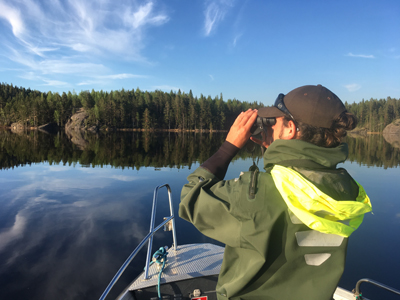 |
Vincent Biard PhD student 2018– in the project Conservation biology of a singular aquatic top predator: an integrated view of the behavioral ecology and genetics of the Saimaa ringed seal. Vincent will study movement patterns and short- and long-term social interactions among seal individuals based on a large citizen-science database of photos taken throughout Lake Saimaa [Read more]. Individual seals can be identified from the photos based on their pelage patterns, which are unique to each individual [Read more]. Vincent will supplement his Photo-ID research with population-genomic analyses of placentas collected from breeding sites, and with genetic surveys of ecto- and endoparasites collected from seals across the lake. These datasets can be used, for example, to study breeding-site fidelity of individual females and transmission dynamics of seal parasites. Vincent's PhD project is supported by a postgraduate grant awarded by the University of Eastern Finland, and is supervised by Mervi Kunnasranta (Natural Resources Institute Finland) and T. Nyman. |
|||||||||
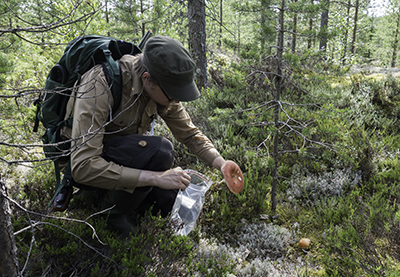 |
Janne Koskinen PhD student 2016– in a project on spatial and temporal variation of insect communities attacking economically important forest mushroom species. Wild edible mushrooms constitute a substantial source of income and recreation in Finland, but they also support a species-rich community of fungus-feeding insects and associated parasitoids and predators. Janne applies DNA barcoding and metabarcoding approaches to assess how fungus-associated food webs vary across locations and different forest types, and how network structure differs across mushroom species. The work is funded by the University of Eastern Finland Doctoral Programme in Environmental Physics, Health, and Biology, and is supervised by T. Nyman, Tomas Roslin (Swedish Agricultural University, Uppsala), and Riikka Kaartinen (University of Helsinki). |
|||||||||
 |
Eeva Ylinen PhD student 2016–, funded mainly by the Raija and Ossi Tuuliainen Foundation and the Betty Väänänen Foundation. Eeva investigates the role and maintenance of species and genetic diversity in isolated and endangered host–parasite systems. The main focus is on parasites of Saimaa ringed seals, which have been landlocked and isolated from the substantially larger ringed seal populations in the Baltic Sea and Lake Ladoga for over 9,000 years. Eeva aims to elucidate whether the extremely low genetic variability of the Saimaa ringed seal is reflected in the species composition and genetic diversity of associated endo- and ectoparasites and pathogens. The project is supervised by T. Nyman, Mervi Kunnasranta (Natural Resources Institute Finland), and Jukka Jernvall (University of Helsinki). |
|||||||||
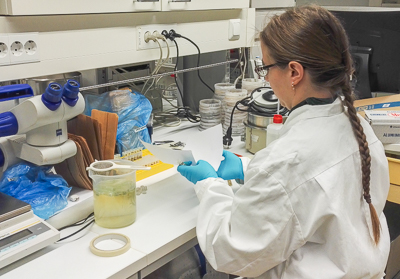 |
Paula Thitz PhD student from 2016 onwards, funded by the Wihuri Foundation and the South Savo and North Karelia Regional Funds of the Finnish Cultural Foundation. Paula’s research interests lie in the allocation of resources to different branches of metabolism in plants. Her PhD project, supervised by Riitta Julkunen-Tiitto (UEF) and T. Nyman, focuses on the secondary componds produced by silver birch. Changes in allocation are studied in silver birch saplings with impeded condensed tannin production, when the saplings are faced with environmental stresses such as insect herbivory or UV-B radiation. |
|||||||||
Lab survivors |
||||||||||
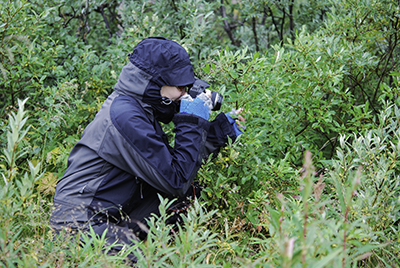 |
Sanna Leppänen PhD student 2008–2014, funded by the Academy of Finland and the Finnish Cultural Foundation North Karelia Regional Fund. Sanna's project focused on the ecology and evolution of tritrophic interactions in food webs centered around leaf-mining and gall-inducing sawflies. The studies included phylogenetic analyses of plants, sawflies, and parasitoids, population-genetic analyses of host-associated divergence in willow-galling sawflies, and DNA barcode-based analyses of parasitoid community structure. Sanna succesfully defended her PhD thesis "Effect of host-plant use on speciation and parasitoid community structure in internal-feeding sawflies" on September 19, 2014. [Thesis intro] |
|||||||||
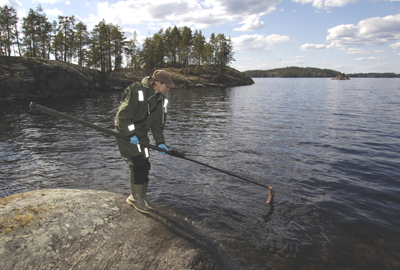 |
Mia Valtonen PhD student 2009–2014 in the Saimaa ringed seal conservation genetics project funded mainly by the Maj and Tor Nessling Foundation. Mia applied mtDNA control-region sequences and nuclear microsatellite loci to study genetic diversity and population structure in the critically endangered Saimaa ringed seal, and developed a method for non-invasive genetic monitoring of the population based on placentas, which can be collected from birth-lair sites after each breeding season. Mia successfully defended her PhD thesis "Conservation genetics of the Saimaa ringed seal – insights into the history of a critically endangered population" on October 31, 2014 [Thesis intro]. Mia continues her work in the Saimaa Ringed Seal Genome Project led by prof. Jukka Jernvall at the University of Helsinki. [Read more] |
|||||||||
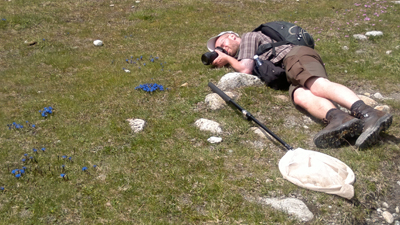 |
Tobias Malm Postdoctoral fellow 2009–2012 in the project "Diversification of plant-feeding insects over millions of years: what is the role of dramatic climate changes?" The three-year project was funded by a grant from the Kone Foundation to prof. Niklas Wahlberg (University of Turku) and T. Nyman. Tobias' part focused on reconstructing the evolutionary history of resource use and diversification in the ancestrally plant-feeding sawfly lineages of the order Hymenoptera. The first paper on order-level hymenopteran phylogenetics is out (Malm & Nyman 2015), and more are in the pipeline. Tobias is coauthor of the freely available VoSeq sequence and voucher database application [Read more], and is now based at the Swedish Museum of Natural History in Stockholm. [Read more] |
|||||||||
M.Sc. students and research visitors Kathryn Fessler Elena Papadopoulou Ilona Karjalainen Teemu Kurki Miika Kotila Juuso Paappanen Perttu Anttonen Iida Koistinen Jenny Kilpiäinen Reijo Koivisto Hanna Buuri Kaisa Värri Kaisa Heimonen Mirja Hyttinen |
||||||||||
|
||||||||||